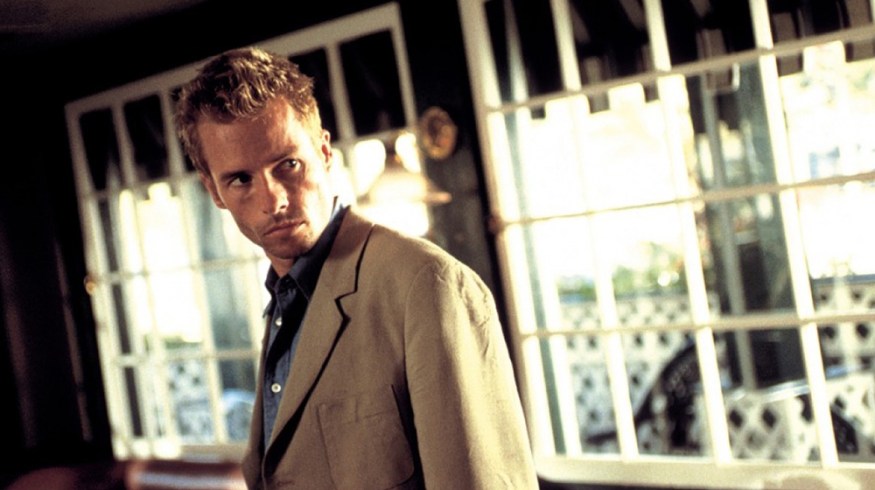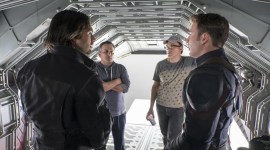
Bending the Rules of the Three-Act Structure
The three-act structure has long been the standard for storytellers — but bending the rules can lead to exceptionally cool results.
The principles of the three-act structure have been employed by storytellers for ages. In the early 20th century, filmmakers adopted the three-act structure to develop compelling stories for their burgeoning art form. While this traditional structure remains the standard, filmmakers have found ways to bend the structure to their creative will.
What Is the Three-Act Structure?
Three acts. Three elements of a narrative arc. Makes sense, right? The set up. The rising action. The resolution. Let’s look a little closer at this concept.
The Set Up
 Image via Lucasfilm
Image via Lucasfilm
The set up is exactly what it sounds like. This is when characters are introduced and the world of the film is established. Near the end of this act, the first turning point is introduced — and the game changes.
The Rising Action
 Image via Lucasfilm
Image via Lucasfilm
The characters spend the second act dealing with the conflict presented at the end of the first act. Traditionally, while confronting said conflict, the characters find a way to make things even worse. This act is the “meat” of the story. It should be dense with plot movement and character development. A weak, meandering second act is a perfect way to lose an audience.
The Resolution
 Image via Lucasfilm
Image via Lucasfilm
In the final act, characters reach their peak potential and growth by acting on valuable lessons learned during the first two acts. The final conflict — the climax of the narrative — arrives. The characters accept their destiny by confronting and defeating their demons/issues/Death Stars.
How to Bend the Rules
The classic three-act structure isn’t going anywhere. It’s undeniably a dependable and familiar storytelling template. Even better, it’s malleable, allowing for subtle subversions and bold disruptions of expectations. Here are some classic examples of stories that tweaked the trope.
Fragmented Structure: Pulp Fiction

Image via Miramax
Quentin Tarantino has built a career on deconstructing the three-act structure. Pulp Fiction has set up, conflict, and resolution — just not necessarily in that order. Tarantino fragments the narrative and jumbles the arc. The story unfolds in chapters told out of turn. Occasionally a three-act structure unfolds within the fragments of the greater whole, but the chapters exist on a timeline that ends in the middle before reaching the end where the story begins. If you will.
Non-Linear Structure: Memento

Image via Newmarket Films
Christopher Nolan never met a story he couldn’t make more complex. Take Memento, for example. To call the film’s narrative path untraditional is an understatement.
The anterograde amnesia of the main character — Leonard, as portrayed by Guy Pearce — allowed Nolan to craft a non-linear playground of a plot that moves forward and backward at once. When the story is unfolding in reverse, Nolan presents the action in color. When time moves chronologically, Nolan uses black and white footage. This device is jarring and disorienting, forcing the audience to feel the effects of Leonard’s inability to create new memories.
Eventually, both strands of the narrative collide at the end of the film in dramatic fashion. The traditional aspects of storytelling are there — but don’t expect to find them in the places they’re usually found.
Parallel Structure: The Usual Suspects

Image via Gramercy Pictures
Compared to the previous examples, The Usual Suspects from Bryan Singer doesn’t play quite as fast and loose with the rules of traditional structure, but it’s still a noteworthy example of manipulating the three-act structure.
Two story lines unfold at once through narration and flashbacks. One thread follows the exploits of criminal Dean Keaton, who is killed at the beginning of the film. The other features the interrogation of Verbal Kint, a small-time hood connected to the incident that led to Keaton’s death. Both play out in linear fashion — but Kint’s narration unfolds “after the fact” and Keaton’s character arc is exposed in flashbacks.
In the end, Singer still uses a traditional three-act structure, it’s just broken up and twisted by the narrative sections featuring Kint. The parallel narratives force the audience to put together two complicated puzzles at once — puzzles that only exist to obscure the shocking final picture.
Is the three-act structure worth using anymore? What are your favorite examples of films that used or abused it? Share your thoughts in the comments below.





